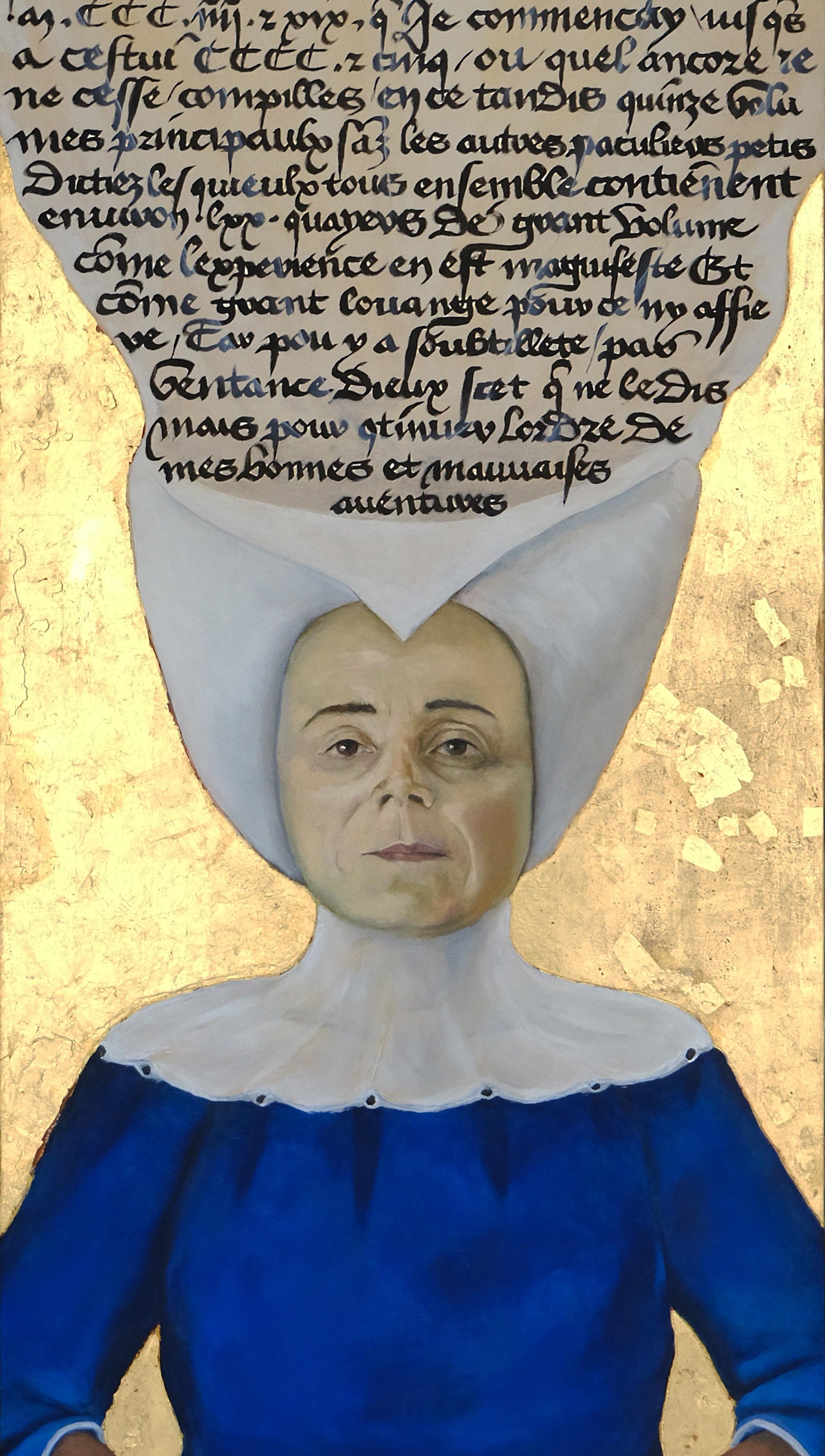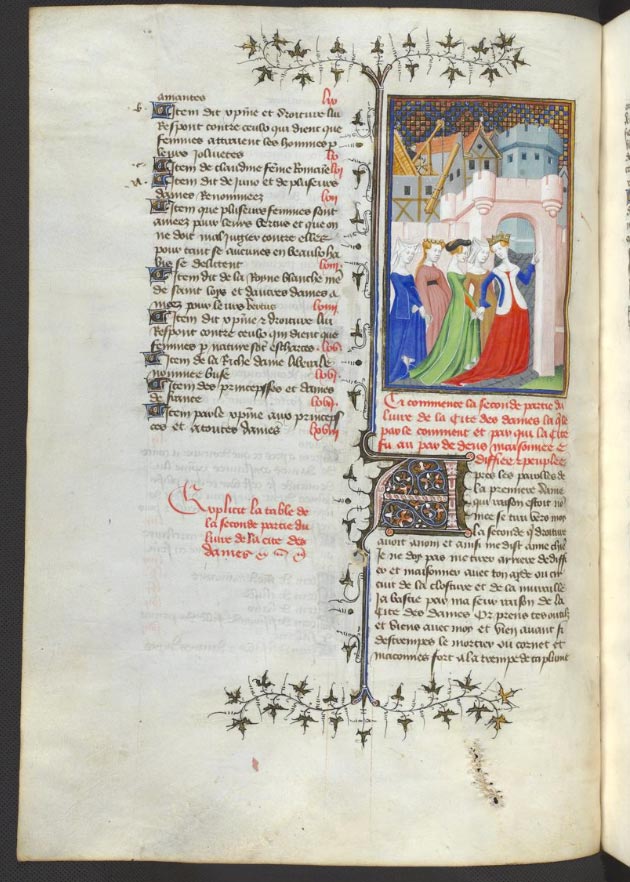
Christine de Pizan
Author & Scholar in the late Middle Ages
Christine de Pizan (Pisan)
* ~1364 (Venice), † 1430 Poissy (France)
Christine de Pizan was an author of the late Middle Ages who was a strong advocate for women, but not only. Widowed at a young age with three children, she faced enormous challenges, which she tackled with courage. Educated by birth, she soon devoted herself to writing texts - first poems, then treatises, biographies and novels. “The City of Ladies” (1405) is her best-known work, which focuses on the achievements of women since antiquity and the (metaphorical) space in which they can thrive: their own city.
Christine de Pizan had many admirers and supporters of her works - including influential women and men at European courts. She wrote until the end of her life in 1430 and had her texts copied in a writing workshop. There were already numerous translations of her works during her lifetime. Her works continued to be read and copied for another ~150 years after her death.
About the Portrait
Is this Christine de Pizan?
We don't know her facial features, but we do know how Christine de Pizan was usually dressed: she wore a hennin (medieval widow's hood), a brown dress with a blue overdress. Her décolleté was covered by a shawl. This portrait picks up on these key points and interprets them. The gilded background was still common during Christine's lifetime.
The text on her veil
What does the calligraphy on the veil mean?
I have copied a passage from her work “Christine's Vision” onto the veil. In this section, Christine describes her work as an author and how she has constantly developed through practice and can now look back on a very extensive body of work. A highly self-confident voice.
Transcription of the original French calligraphy (letters in brackets represent missing letters):
Adont me pris a forger choses jolies, a mon commencement plus legieres, et tout ainsi comme l'ouvrier qui de plus en plus en son oeuvre se soubtille comme plus il la frequente, ainsi tous jours estudiant diverses matieres, mon sens de plus en plus s'imbuoit de chos(es) estranges, amendant mon stile en plus grant soubtilleté et plus haulte matiere, depuis l'an mil •CCC•XXXX• et •XIX• q(ue) je commencay jusques a cestui •CCCC• et cinq ou quel encore je ne cesse, compillés en ce tandis quinze volumes principaux sa(n)s les autres pa(rti)culiers petis dictiez, lesquieulx tous ensemble contiennent environ •LXX• quayers de grant volume, co(m)me l'experience en est manifeste. Et co(m)me grant louange pour ce n'y affiere, car pou y a soubtilleté, par ventance Dieux scet q(ue) ne le dis, mais pour c(on)tinuer l'ordre de mes bonnes et mauvaises aventures.
Christine de Pizan's Biography
A woman who had a lot to say and did so in numerous texts
Widowed at a young age with 3 children, Christine de Pizan had to take over the head of the household, as was customary in France at the end of the 14th century. Unusually, she decided against a second marriage despite financial difficulties. Christine fought for years in a legal battle for the inheritance due to her family until she finally won her rights. Christine goes one step further and begins to write her own texts. Starting with poems, the only literary form open to women at the time, she confidently switched to treatises and a counter-position to a popular, misogynistic novel (“Roman de la Rose”, Jean de Meung, Guillaume de Lorris), which became part of the so-called “Rose Controversy” and would occupy generations of authors after her. Christine published in the only form available at the time: the manuscript.
She is commissioned to write biographies and devotes herself to her own literature. “The City of Ladies” (1405) is her best-known work and focuses on the achievements of women, which can be freely pursued by all women in a protected place - the city of ladies. In her work “Christine's Vision” there are extensive autobiographical passages that give us a first-hand insight into her work. Shortly before the end of her life, she wrote a verse tribute to Joan of Arc's achievement in freeing France from the power of England. This makes Christine de Pizan the first and only person to pay tribute to Joan of Arc during her lifetime.
Christine de Pizan was a respected scholar and author already during her lifetime. Her works continued to be highly successful for the next 150 years, translated into numerous European languages, read and copied in Europe.
Historical image and text material
Christine's self-portrayals in her books (manuscripts) – in text and image
(click on the image for enlargement and details in the caption)







